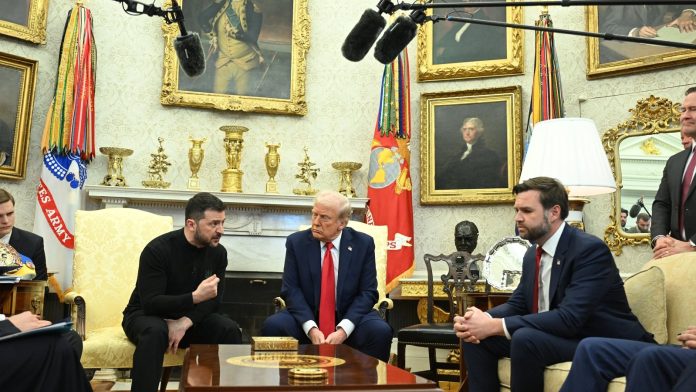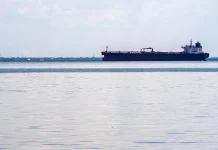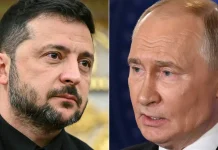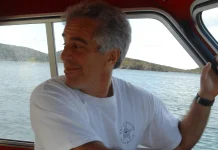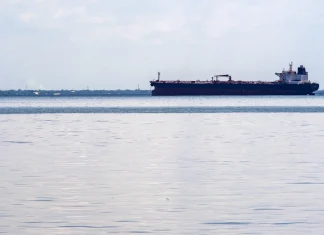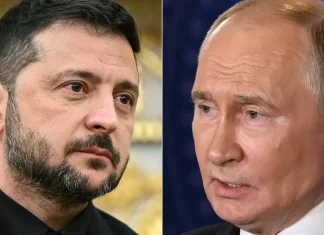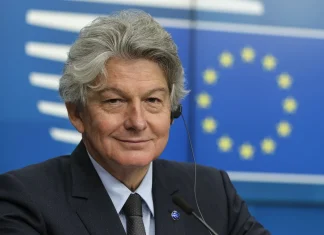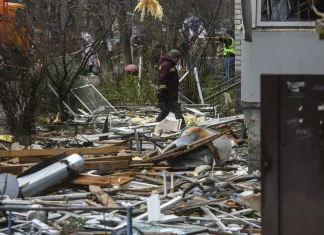From Tension to Tentative Truce: Zelensky’s Return to the Oval Office and the High-Stakes Dance of Diplomacy
When Ukrainian President Volodymyr Zelensky steps back into the Oval Office today, it will mark a full-circle moment infused with all the drama, resilience, and uncertainty that has defined Kyiv-Washington relations over the past few months. Once a battlefield of blistering words and clipped tempers, the room where global power is harnessed is now the stage for a delicate ballet of diplomacy—one that carries immense weight not just for Ukraine, but for the fragile fabric of international peace.
Imagine the scene: just a little over three months ago, on a chilly day at the end of February, the Oval Office witnessed a public unraveling of goodwill between two leaders. President Zelensky, understandably cautious and constrained by the need to navigate a complicated language barrier, faced a firestorm of criticism from then-US President Donald Trump and his Vice President, JD Vance. Their scorn was simmering on live television, charging the Ukrainian leader with a lack of gratitude. “Have you said ‘thank you’ once?” Vance snapped, with palpable frustration. The entire exchange cut deep into public consciousness, shaking the bedrock of US support for Ukraine amid the ongoing conflict with Russia, now in its third grueling year.
A Clash Forged in Mistrust and Miscommunication
Zelensky’s skepticism toward Russian President Vladimir Putin was met not with sympathy but outright rebuke. His warning—that appeasing Putin could lead to a broader and more perilous fallout—seemed to enflame Trump’s temper rather than invite dialogue. “You don’t know that. Don’t tell us what we’re going to feel,” Trump bellowed, an electric moment that punctuated the delicate tension. The conversation spiraled into a public spectacle of frustration and misunderstanding.
Why did this moment resonate so deeply? Because it encapsulated the struggle of smaller nations caught in global power plays—where gratitude is demanded and vulnerabilities are exploited.
“Being on the receiving end of aid is always complex,” says Dr. Hana Petrovna, an Eastern European geopolitics expert based in Kyiv. “Ukraine is grateful, but it also needs to assert its sovereignty and strategy on the world stage. Zelensky was navigating a minefield, and the American leaders’ harsh response only revealed a lack of appreciation for these nuances.”
The Fallout and Fragile Hope
In the aftermath, US military aid paused, intelligence sharing flickered uncertainly, and European capitals collectively held their breath. Was the United States turning its back on Ukraine at a critical juncture? The fears were not unfounded, as Trump’s historically ambivalent stance on Russia loomed over diplomatic corridors.
Yet as spring thawed winter tensions, something shifted. Trump’s patience with Moscow’s unrelenting offensive seemed to fray, and a new chapter of engagement began to emerge. The Vatican in April became a symbolic reconciliation point where the two leaders met again—this time with a different tone.
“It was striking,” recalls Cardinal Luca Mariani, a Vatican official who witnessed the meeting. “Trump openly criticized Putin, expressing frustration that the Russian leader had been ‘tapping me along’ without delivering on his promises. It was a moment when geopolitical realities began to outweigh personal affinities.”
Mining for Peace: The Minerals Deal and Renewed Negotiations
One of the most tangible outcomes of this thaw was the signing of a minerals deal—an agreement previously sidelined amid earlier tensions. The negotiation underscored how intertwined global economic interests are with military aid and political diplomacy. Minerals from Ukraine are critical not only for its own economic recovery but also for industries worldwide, especially in the tech and energy sectors.
By June, as NATO’s summit unfolded in The Hague, Trump and Zelensky met again. Their convergence symbolized a hesitant but hopeful dialogue—proof that even fraught relationships can recalibrate under the weight of global demands.
Alaskan Ice Meets Political Fire: Trump and Putin’s High-Stakes Summit
Then came the much-watched Trump-Putin meeting in Alaska, a scene weighted with history and urgency. Trump promised to vet any agreements with Ukraine and European partners beforehand—a nod to the complex multilateral nature of the conflict. Shortly after, the Oval Office extended a new invitation to Zelensky, who accepted with cautious gratitude.
“Trust is still fragile, but diplomacy is a dialogue, not a monologue,” Zelensky commented ahead of today’s meeting. “The stakes are high—not just for Ukraine, but for every nation that values peace and sovereignty.”
Europe Joins the Table: A Collective Search for Stability
What’s different this time? European heavyweights are arriving in Washington alongside Zelensky. Leaders like UK Prime Minister Keir Starmer, French President Emmanuel Macron, German Chancellor Friedrich Merz, and EU Commission President Ursula von der Leyen stand unified, seeking to avoid another diplomatic meltdown while architecting a path forward toward sustained peace.
NATO Secretary-General Mark Rutte will also be present, stressing the alliance’s commitment to Ukraine’s security. The US administration, previously reticent, has signaled openness toward providing Ukraine with formal security guarantees—a crucial shift welcomed by Ukrainian and European voices alike.
- Security guarantees could dramatically alter the tactical landscape and provide Kyiv with a stronger diplomatic footing.
- This move has been hailed as a possible cornerstone for lasting peace and deterrence.
- The inclusion of Vance in the talks adds another layer of complexity, but also reconciliation, given his previous tense exchanges with Zelensky.
What Lies Ahead?
As you read this, think about what this meeting symbolizes on the world stage. It’s not merely a diplomatic catch-up or a photo op. It’s a confrontation with the modern realities of war, alliance, and power.
How do nations navigate the tightrope between sovereignty and dependence? How do global leaders balance public sentiment against strategic necessity? And most poignantly—how can the voices of ordinary people, from Kyiv’s bustling streets to small town America, influence the high-stakes chess game being played thousands of miles away?
In a world increasingly defined by fractured alliances and unpredictable rhetoric, the Oval Office has never been more than a room. Yet in its walls, it holds the capacity for both discord and dialogue, for setbacks and breakthroughs. Today’s meeting is a testament to the enduring hope that even the most strained ties can find threads of common humanity and shared purpose.
So, as Zelensky prepares to once again face Trump and the eyes of the world, let us listen not just for what is said, but for the silences between words—the unspoken fears, hopes, and commitments bound up in this complex dance for peace.
Because ultimately, this is more than a geopolitical saga; it’s a human story about resilience, respect, and the relentless pursuit of a safer tomorrow.


